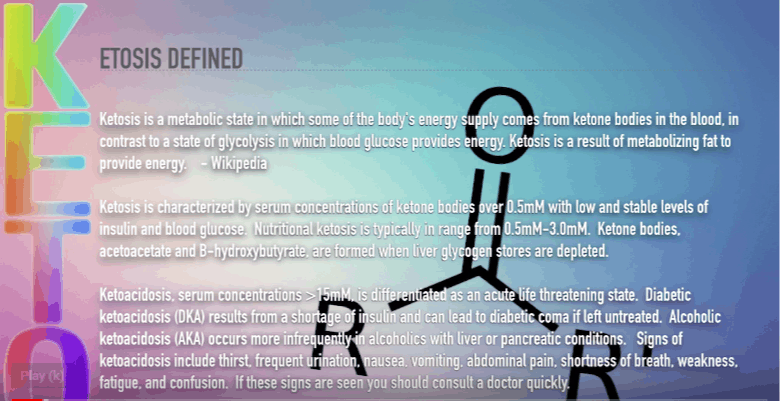What Is the Keto Diet?

In this workshop, THE KETO DIET EXPLAINED – Health Fad, Fraud or Sustainable Diet Plan?,Dr. Mike Bucknell of Liberation Chiropractic & Wellness in Mobile, Alabama discusses the current popularity of the Ketogenic (or Keto) Diet. Is it a fad, a trend, or is it the diet to end all diets?
This post is a supplement to the workshop published on January 23, 2018 by Dr. Mike Bucknell and can be found on his YouTube channel at https://youtu.be/-Hf__Y7v3Qo?t=22. Due to the quantity of the information, it has been separated into two parts:
- The Keto Diet Explained: Health Fad, Fraud or Sustainable Diet Plan?: Part 1 – What is the Keto Diet?
- The Keto Diet Explained: Health Fad, Fraud or Sustainable Diet Plan?: Part 2 – What Do I Eat on the Keto Diet?
KETOSIS DEFINED

What Is Ketosis?
“Ketosis is a metabolic state in which some of the body’s energy supply comes from ketone bodies in the blood, in contrast to a state of glycolysis in which blood glucose provides energy. Ketosis is a result of metabolizing fat to provide energy.†—Wikipedia
KETOSIS AND KETOACIDOSIS ARE NOT THE SAME
Ketosis vs. Ketoacidosis
- KETOSIS is characterized by serum concentrations of ketone bodies over 0.5mM with low and stable levels of insulin and blood glucose. Nutritional ketosis is typically in range from 0.5mM – 3.0mM. Ketone bodies acetoacetate and B-hydroxybutyrate are formed when liver glycogen stores are depleted.
- KETOACIDOSIS: Serum concentrations >15mM, is differentiated as an acute life-threatening state. Signs of ketoacidosis include thirst, frequent urination, nausea, vomiting, abdominal pain, shortness of breath, weakness, fatigue, confusion. If these signs are seen, you should consult a doctor quickly.
IS KETOSIS DANGEROUS?

Ketosis Safety
- Some doctors regard complete elimination of carbs as unhealthy and dangerous, but for most patients it is unlikely to have serious side effects. Most symptoms of ketosis are the simple transition from the body having to alter its trained method of energy production.
- Studies have shown that after the “Schwatka Imperative†period, a 2-4 week transition period from glucose adaptation to keto-adaptation, physical endurance is unaffected so long as the diet is high in nutritional fat.
- Those who should exercise caution and proceed slowly are anyone who is a Type I or Type II diabetic, has digestive metabolism issues such as gall bladder issues, pancreatitis, kidney or liver disease, or has had any form of intestinal tract surgery (gastric bypass, colectomy, etc.)
HOW DO I KNOW WHEN I’M IN KETOSIS?

Ketosis Transition Signs
- Weight Loss
- Appetite Regulation
- Increased Energy
- Fatigue Diminishes
- Stool Changes (See the “Bulging Bellies†Workshop).
- Palatable Breath
- Devices like the Keto Mojo can be purchased to measure your blood ketone and glucose levels.
Continue Reading:
The Keto Diet Explained: Health Fad, Fraud or Sustainable Diet Plan?: Part 2 – What Do I Eat on the Keto Diet? (Discusses topics such as Keto Diet Options [Strict vs. Modified], Liberation Chiropractic’s Advanced and Core Diets, Exogenous Ketones – Beneficial?)Â
- First price adjustments since PreCOVID start Monday 4/14 - April 9, 2025
- Best Anatomical Sleep - April 2, 2025
- Robert Kennedy Jr how head of HHS - March 20, 2025
- Deductibles Reset Jan 1st - December 5, 2024
- Slacking on Home Care? - July 15, 2024
- A Tale of Two Spines - June 26, 2024
- Never again pay for a “Discount Program” - April 18, 2024
- Ready for some change? - December 28, 2023
- Good health more affordable than ever - May 16, 2023
- How bad will 2023 get? - January 25, 2023
